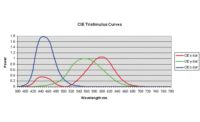In psychological terms, perception is defined as our recognition and interpretation of sensory information, as well as how we respond to the information.
To understand perception, information technology and literacy instructor Yolanda Williams asks us to think of it “as a process where we take in sensory information from our environment and use that information in order to interact with our environment. Perception allows us to take the sensory information in and make it into something meaningful.”
Williams provides an example dealing with words:
“Each letter of the alphabet is in itself a singular letter. When we perceive words, we think of them as one singular unit that is made up of smaller parts called letters. It is through this organization of letters into words that we are able to make something meaningful. That is, we perceive an entire word, and this word has a specific meaning that can be found in the dictionary.”
Perception is not only necessary for us to understand and interact with the world, but is necessary for our very survival. Imagine if we were not able to process whether a surface was hot enough to burn us. Imagine not being able to recognize the sounds and sight of an oncoming car when we reach an intersection. We could wind up with third-degree burns and being hit by a moving car crossing the street.
Traditionally, our senses were viewed as “passive receptors,” studies have “demonstrated that the brain’s perceptual systems actively and pre-consciously attempt to make sense of their input.” Our entire central nervous system is constantly interpreting the information we are receiving from the world around us. In other words, we are constantly “perceiving.” Psychologists distinguish between two types of processes in these perceptions: bottom-up processing and top-down processing:
Bottom-up processing is also known as data-driven processing, because perception begins with the stimulus itself. Processing is carried out in one direction from the retina to the visual cortex, with each successive stage in the visual pathway carrying out ever more complex analysis of the input.
Top-down processing refers to the use of contextual information in pattern recognition. For example, understanding difficult handwriting is easier when reading complete sentences than when reading single and isolated words. This is because the meaning of the surrounding words provides a context to aid understanding.
The same can be said for the machines, software and processes we use in our industry for data collection. In this month’s Quality, Gordon McKeown writes, “Data collection is the eyes and ears of the modern business. In a complex environment characterized by many levels of organization, many autonomous external agencies acting independently, many internal agents acting with more autonomy than you think, and the whole system subject to adaptation and constant change, those eyes and ears need to be switched on and working well…Data needs to be collected, analyzed and understood before it can be reported as information or used to make policy and decisions. It needs to be fresh: last week’s stale data is last week’s situation.”
Check out Gordon’s article, “What’s Going On?” and learn about the latest techniques in “this battle for perception.”
As always, enjoy and thanks for reading!




